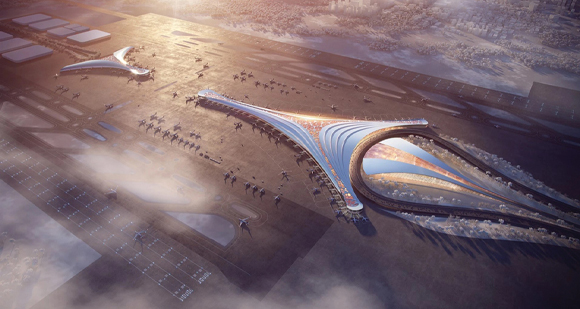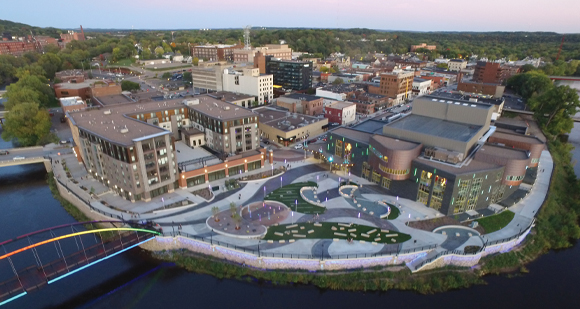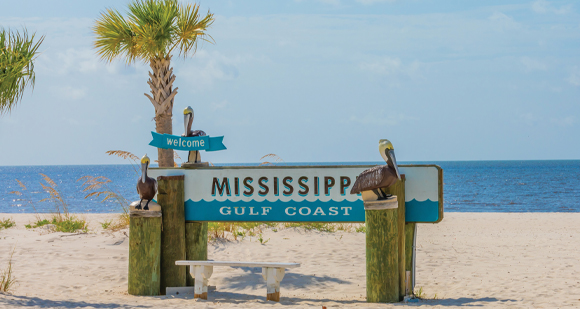|



|
FROM SITE SELECTION
MAGAZINE, JULY 2022 ISSUE
|

|
NEWS DIGEST
Quick stories update you on the new “Solidarity Transport Hub” near
Warsaw, Poland; POSCO’s lithium plant in Argentina; an expansion by
Mercedes in Stuttgart; Ferrotec’s semiconductor fab in Malaysia; and
prospects for increased global FDI flows.
|
|

|
WISCONSIN
Talent attraction efforts receive a big boost in the Badger State.
|
|
  |
|
The New York Times earlier this week alerted many to the release last
week of Up For Growth’s report on state and metro housing shortages. The
organization makes available its full data set covering housing unit
production in every state plus D.C. and in 302 metro areas every year
from 2012 through 2019. Among the things you can glean from the data:
California was No. 1 in underproduction in 2019, with a deficit of
977,654 units representing 6.8%% of total units in existence. More
surprising: Since 2012 (when that percentage was a mere 3.9%, also No.
1), the state’s overall number of units has increased by only 658,815
units.
Following California in underproduction by percentage of total units are
Colorado, Utah, Oregon and Washington, followed by Washington, D.C.;
Arizona; Minnesota; New Jersey and Massachusetts.
Leading all metro areas in housing unit underproduction is the booming
EV battery capital of Gainesville, Georgia, north of Atlanta along I-85.
Below are the entire “top” 10 in underproduction, followed by the
“bottom 10.” Look and see how many of these communities show up in our
annual Top Metros and Top Micropolitan areas rankings.-Adam
Bruns
Highest in Housing Unit Underproduction as
Percent of Overall Units
| # |
Metro |
Percent |
| 1. |
Gainesville, GA |
11.6 |
| 2. |
Oxnard-Thousand Oaks-Ventura, CA
|
10.9 |
| 3. |
Riverside-San Bernardino-Ontario, CA
|
10.4 |
| 4. |
Salem, OR |
10.3 |
| 5. |
Laredo, TX |
9.9 |
| 6. |
Merced, CA |
8.7 |
| 7. |
Brownsville-Harlingen, TX |
8.6 |
| 8. |
Los Angeles-Long Beach-Anaheim, CA
|
8.4 |
| 9. |
Bend, OR |
8.2 |
| 10. |
Miami-Fort Lauderdale-Pompano Beach,
FL |
8.1 |
Lowest in Housing Unit Underproduction as
Percent of Overall Units
| # |
Metro |
Percent |
| 1. |
Ocean City, NJ |
-13.2 |
| 2. |
Lawton, OK |
-12 |
| 3. |
Manhattan, KS |
-11.7 |
| 4. |
Daphne-Fairhope-Foley, AL |
-10.1 |
| 5. |
Champaign-Urbana, IL |
-8.4 |
| 6. |
Jacksonville, NC |
-8.3 |
| 7. |
Longview, TX |
-8.2 |
| 8. |
Greenville, NC |
-7.7 |
|
Monroe, LA |
-7.7 |
|
Miami-Fort Lauderdale-Pompano Beach,
FL |
-7.7 |
|
|
|
2022 MISSISSIPPI
DEVELOPMENT GUIDE
|

|
PHOTO GALLERY
Views of the Magnolia State from Natchez to Noxubee to Clarksdale.
|
|
|
SITE SELECTION
RECOMMENDS
|
|
As the Brookings Institution’s Mark Muro recently pointed out, the newly
passed CHIPS Act is about a lot more than just chips. (For
more, watch for his insights on Texas in the September issue
of Site Selection.). He points to a particular passage in the bill
that calls for “the Department of Commerce to create 20
geographically distributed ‘regional technology and
innovation hubs’ in areas that are not leading technology
centers. These hubs will focus on technology development,
job creation, and expanding U.S. innovation capacity. The
provision authorizes $10 billion for the program from Fiscal
Year 2023 through Fiscal Year 2027 and directs the Secretary
to designate at least three new ‘hubs’ [why the quotation
marks?] in each of the Economic Development Administration’s
six regions.” It also authorizes $1 billion as part of
establishing the “Recompete Pilot Program” to support
persistently distressed communities, which Muro tells me
reflects Brookings Metro’s work, in this case by Tim Bartik of the W.E. Upjohn Institute
for Employment Research. “In addition, the bill
authorizes a Regional Clean Energy Innovation Program at the
Department of Energy to promote economic development in
diverse geographic areas through clean energy innovation,”
Muro continues. “Beyond that, the legislation authorizes
over $2 billion for the Hollings Manufacturing Extension
Partnership to support innovation in the manufacturing
sector and calls for more than $800 million to expand the
Manufacturing USA network of regional technology
institutes,” much as the Association of University Research
Parks’ Brian Darmody argued
in the July issue of Site Selection.
|
|
|
Hungary
Ningde, China–based Contemporary Amperex Technology Co., Limited (CATL)
last week announced this investment to build a 100 GWh battery plant in
Debrecen in eastern Hungary, the company’s second battery plant in
Europe following its German plant about to open at the Erfurter Kreuz
industrial area in Amt Wachsenburg, Thuringia. “Covering an area of 221
hectares [546 acres] in the Southern Industrial Park of Debrecen, the
project will supply both cells and modules to European automakers,” the
company said. “Debrecen is located at the heart of Europe, and with
close proximity to some auto plants of its customers such as
Mercedes-Benz, BMW, Stellantis and Volkswagen, CATL’s Debrecen plant
will enable it to better cope with the battery demands of the European
market, improve its global production network development, and help
accelerate e-mobility and energy transition in Europe.” There could be
more investments to come: “To build a sustainable and circular battery
value chain,” the company said, “CATL is also examining the possibility
of joining forces with local partners to establish facilities for
battery materials in Europe.”
Massachusetts
On the same day as the announcement above, Hyundai Motor Group announced
the launch of Boston Dynamics AI Institute in the Kendall Square area of
Cambridge. “As a research-first organization, the Institute will work on
solving the most important and difficult challenges facing the creation
of advanced robots,” the companies said. “Elite talent across AI,
robotics, computing, machine learning and engineering will develop
technology for robots and use it to advance their capabilities and
usefulness. The Institute’s culture is designed to combine the best
features of university research labs with those of corporate development
labs while working in four core technical areas: cognitive AI, athletic
AI, organic hardware design as well as ethics and policy.” The Institute
plans to hire AI and robotics researchers, software and hardware
engineers, and technicians at all levels.
|
|

|
Photo by Wolfgang Volz© 1991 Christo and
Jeanne-Claude Foundation
|
|
At sunrise on October 9, 1991, Christo and Jeanne-Claude’s 1,880 workers
began to open 3,100 umbrellas in the Prefecture of Ibaraki in Japan and
in California on the properties of Tejon Ranch, 25 private landowners
and governmental agencies along I-5 and the Tejon Pass. For “The
Umbrellas,” a project seven years in the making, 11 manufacturers in
Japan, USA, Germany and Canada prepared the various elements, says the artists’ website.
“All 3,100 umbrellas were assembled in Bakersfield, California, from
where the 1,340 blue umbrellas were shipped to Japan.”
The $26 million work of art was entirely financed by the artists, who
did not accept sponsorship. Removal of the installation started 18 days
later on October 27, the land was restored to its original condition and
most of the elements were recycled. “In the precious and limited space
of Japan, the umbrellas were positioned intimately, close together and
sometimes following the geometry of the rice fields. In the luxuriant
vegetation enriched by water year round, the umbrellas were blue. In the
California vastness of uncultivated grazing land, the configuration of
the umbrellas was whimsical and spreading in every direction. The brown
hills are covered by blond grass. In that dry landscape, the umbrellas
were yellow.” For those 18 days, say the artists, the work was “seen,
approached, and enjoyed by the public, either by car from a distance and
closer as they bordered the roads, or by walking under ‘The Umbrellas’
in their luminous shadows.”
|
|
|
|

